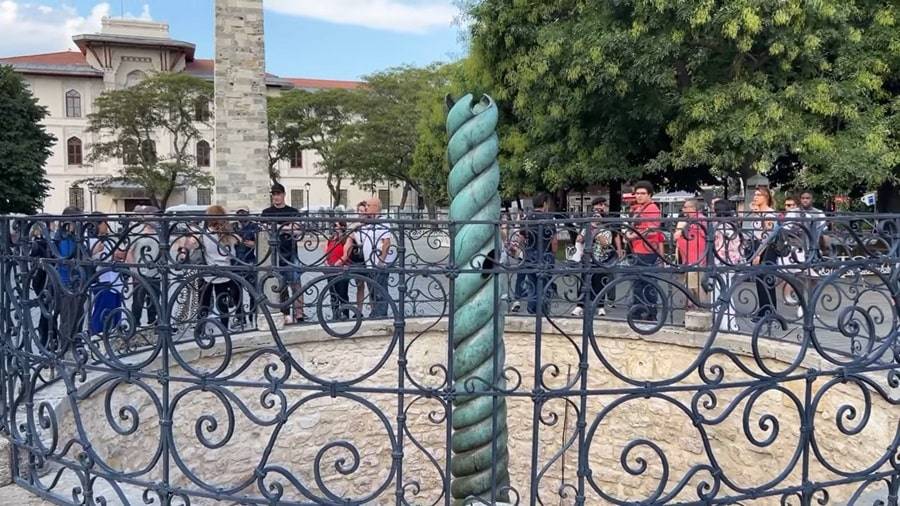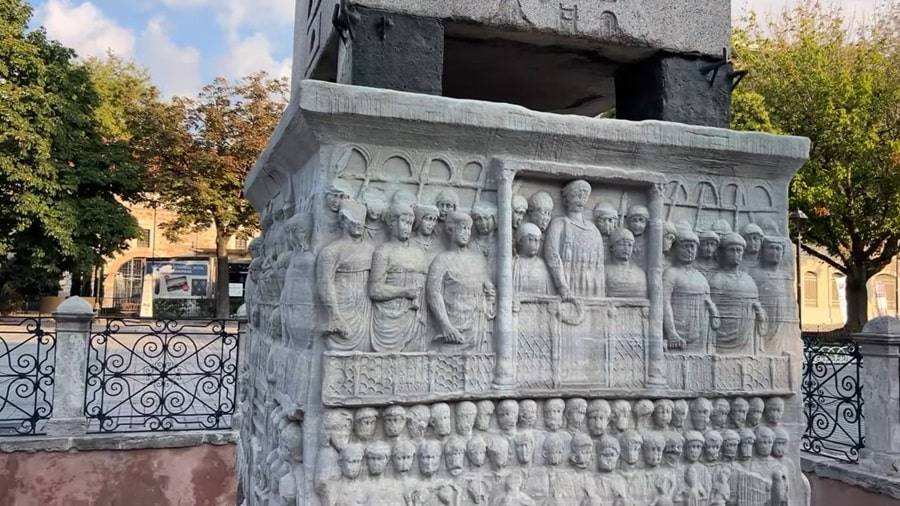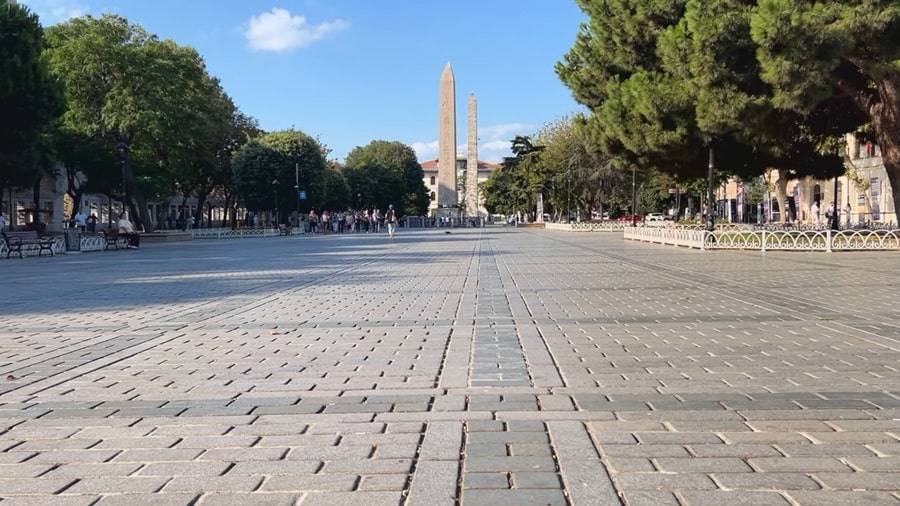Standing amidst the bustling heart of Istanbul, the Hippodrome of Constantinople whispers tales of emperors, chariot races, and a glorious bygone era. This once-grand sporting and social center, today known as Sultanahmet Square, is a significant historical landmark that offers a glimpse into the rich tapestry of Byzantine history. Though the track itself is no longer visible, the remaining monuments stand as captivating testaments to the city’s Roman and Byzantine heritage.
History of the Hippodrome
The Hippodrome’s origins date back to the Roman era, constructed in the early 2nd century AD under the reign of Septimius Severus. At the time, Byzantium (present-day Istanbul) was a provincial town. However, with the city’s rise to prominence as the new capital of the Eastern Roman Empire (later known as the Byzantine Empire) in the 4th century AD, the Hippodrome took on a new significance. Emperor Constantine the Great expanded and embellished the structure, transforming it into a magnificent venue for chariot races, athletic contests, and elaborate imperial ceremonies. The Hippodrome became the heart of Byzantine social life, a place where citizens gathered for entertainment, political demonstrations, and even riots.
Location and Access

The Hippodrome is conveniently located in Istanbul’s Fatih district, nestled amidst iconic landmarks like the Hagia Sophia and the Blue Mosque. Reaching this historical site is easy. Take a tram or hop on a taxi to Sultanahmet Square, the heart of the old city. The Hippodrome itself is a free, open-air museum accessible to all visitors.
Architecture and Design

Though the racetrack and seating areas are no longer visible, the Hippodrome’s layout can still be discerned. It was a massive U-shaped arena, capable of accommodating tens of thousands of spectators. Several impressive monuments once adorned the central spina (a dividing barrier down the center of the track), of which three remain standing today:
The Obelisk of Theodosius: This Egyptian obelisk, brought to Constantinople by Emperor Theodosius I in the 4th century AD, is a marvel of ancient engineering. Decorated with hieroglyphs, it stands as a testament to the city’s connection to the Roman world.
The Serpent Column: This enigmatic bronze column, originally part of a Greek tripod, is believed to have been brought to Constantinople from Delphi in Greece. Wreathed with serpents, the column has inspired numerous legends and myths throughout history.
The Column of Constantine Porphyrogenitus: Erected by Emperor Constantine VII in the 10th century AD, this column was originally topped with a statue of the emperor himself. The intricate carvings on the base depict scenes of triumph and victory. Elevate your experience of Hippodrome of Constantinople with our top-rated tour offering.
Main Attractions

The remaining monuments of the Hippodrome offer a captivating glimpse into Byzantine history:
Obelisk of Theodosius: Marvel at the hieroglyphic inscriptions and contemplate the engineering feat of transporting this ancient obelisk from Egypt. Imagine the crowds that once cheered for their favorite chariot teams from the shadows of this towering monument.
Serpent Column: Unravel the mysteries surrounding the Serpent Column. Was it a victory trophy, a religious symbol, or something else entirely? Let your imagination wander as you ponder the stories whispered by this enigmatic monument.
Column of Constantine Porphyrogenitus: Examine the detailed carvings on the column’s base, depicting scenes of victory and imperial power. Consider the significance of these images during the reign of Constantine VII, a time of both triumph and turmoil for the Byzantine Empire.

